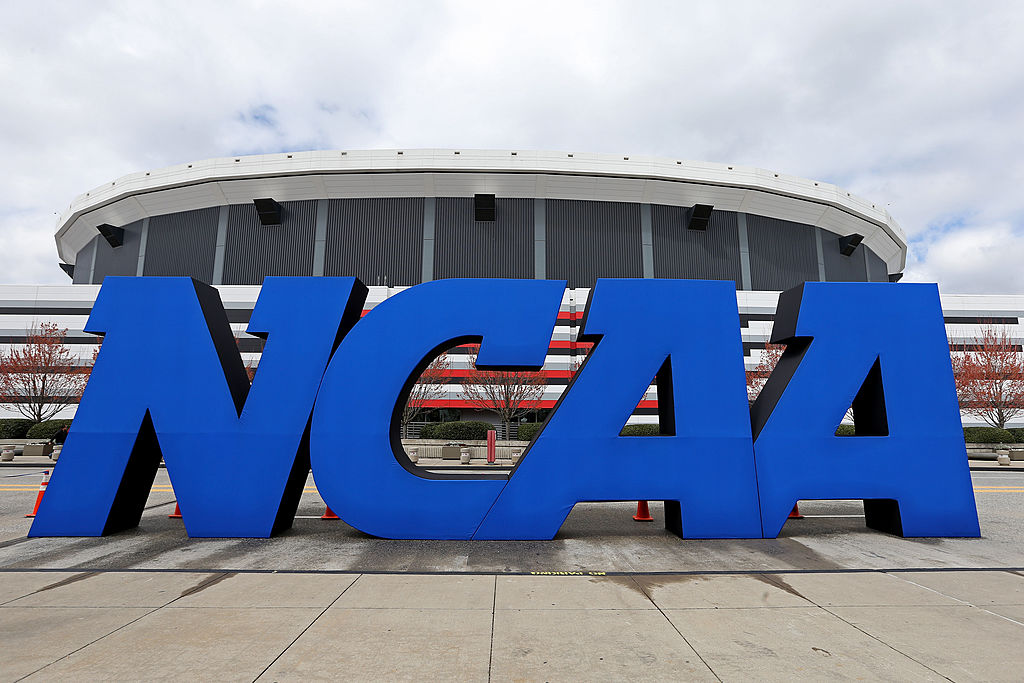In this unfortunately bizarre college football season, the usual ways of conducting off-field business don’t apply.
At least they shouldn’t.
That’s one of the many reasons the College Football Playoff selection committee missed on an opportunity to try something that could become precedent.
No, I’m not talking about the likely inevitable expansion of the CFP field from four to six or eight teams.
Rather, it’s about making the most of the four-team field … as long as it lasts.
In the semifinals Friday, the CFP gave us No. 4 Notre Dame vs. No. 1 Alabama in the Rose Bowl and No. 2 Clemson vs. No. 3 Ohio State in the Sugar Bowl.
Despite Texas A&M coach Jimbo Fisher’s understandable and unsuccessful lobbying, and the Aggies’ No. 5 ranking across the board (CFP, AP, Coaches), they aren’t the most unfair exclusion from the field.
Neither were the undefeated Group of 5 standard bearers, the Cincinnati Bearcats.
The Oklahoma Sooners are.
They’re set to play Florida Wednesday in the Cotton Bowl.
Even if the Sooners are waxed, I’ll stick with this point: As long as the CFP remains at four teams, the way to effectively expand the field without adding teams is to consider the conference championship games as play-ins.
Play-ins to CFP consideration, not to automatic CFP inclusion.
That last stipulation is necessary, of course, because at least one Power 5 conference champion has to be shut out. In normal times, when Notre Dame is an independent, that number might be two.
Pac-12 commissioner Larry Scott in late September — or two months before the league opened its season — proposed that the 2020 field be expanded to eight teams.
The CFP management committee rejected that idea.
The Pac-12 is unfairly slighted at times, but this season — and especially the way it played out — its exclusion was unavoidable.
It would have been debatable, at least, if USC had beaten two-loss Oregon in the conference championship game to get to 6-0. The kicker is that the limited, delayed and cancellation-plagued Pac-12 and Big Ten schedules likely left those conference’s teams less competitively sharp than those in the other leagues, and that might be evident when Ohio State — also 6-0, in part thanks to the Big Ten tweaking its protocol to get the Buckeyes in its championship game — faces Clemson.
Because of a combination of suspect qualifications and opting out, the Pac-12 actually ended up with only two bowl teams — Oregon against Iowa State in the Fiesta Bowl and Colorado against Texas in the Alamo Bowl.
Once the Pac-12 was tossed out of CFP consideration, and with Notre Dame at least temporarily playing an ACC schedule, the most sensible course of action was obvious.
Consider the conference championship games the CFP’s (unofficial) first round.
Oh, but what if a case can be made that two of the top four — or maybe even the top two — teams are from the same league? The SEC, for example?
So?
Oh, but isn’t one of the attractions of March Madness that non-league champions can make it through to the Final Four — or even win it?
Yes, but that’s apples and oranges.
One more time. This is the key starting point: As long as the CFP remains at four teams …
As long as the CFP remains at four teams, all know going in they’re effectively trying to remain alive in the CFP bracket when they’re in conference championship games.
No more than one team from a league can make the four-team field.
Notre Dame and everyone else would have known that the ACC championship game — a rematch with Trevor Lawrence able to play for Clemson this time — was for a berth in the CFP.
With league champions only, the CFP committee doesn’t have to be involved in the inexact science of selecting the top four teams, even if more than one of them are from the same league. They’re selecting from among the Power 5 league champions … and maybe an independent. (Actually, I’d exclude the independents, but I’ll leave that debate for another day.)
Now, even if the Fighting Irish beat Alabama and Clemson, I’ll stand by the point that they shouldn’t even have been in the field … because they didn’t win the ACC championship game.
The CFP semifinal in the Rose Bowl should have been Alabama vs. Big 12 champ Oklahoma.
Then that winner would move on to face the Clemson-Ohio State Sugar Bowl winner in the CFP title game.
Those offended that under that plan, the four-team CFP field that requires winning a conference championship game to be included — or extraordinary consideration as an independent (e.g., Notre Dame in other years — would be motivated to raise the volume of their lobbying for an expansion to six or eight teams.
It’s going to happen someday.
About Terry: Terry Frei is the author of seven books. His novels are Olympic Affair and The Witch’s Season, and among his five non-fiction works are Horns, Hogs, and Nixon Coming; Third Down and a War to Go; and ’77: Denver, the Broncos, and a Coming of Age. Information is available on his web site, terryfrei.com His woodypaige.com archive can be found here.
More from The Woody Paige Sports Network:
- Woody Paige: That time I played blackjack with Michael Jordan in Monte Carlo
- ‘Most losses in 2020’ prop bet offers NFL bettors huge value
- Atlanta Falcons lose by accidentally scoring a touchdown
- Woody Paige: Denver Broncos could become NFL’s version of New York Knicks
- Woody Paige: Who will emerge as the next owner of the Denver Broncos?
- Report: Detroit Lions planning to move on from Matthew Stafford
- Woody Paige: Broncos must lose season finale — for multiple reasons



















